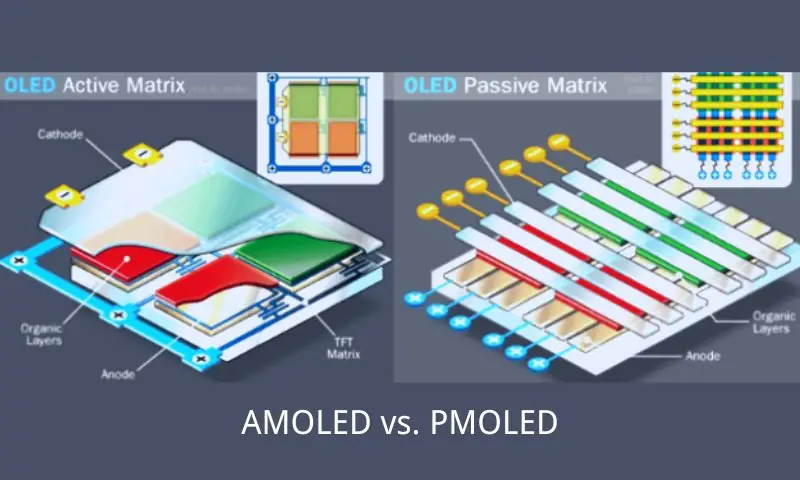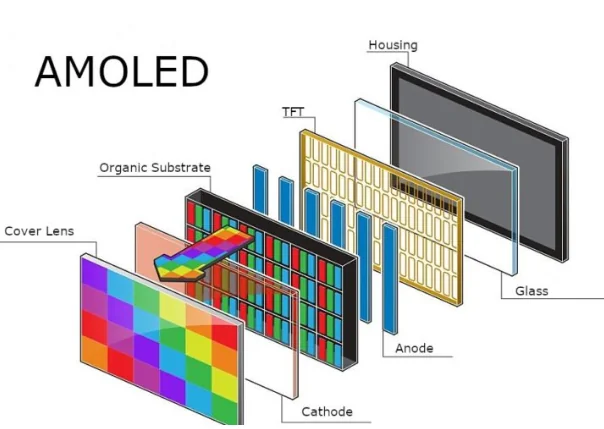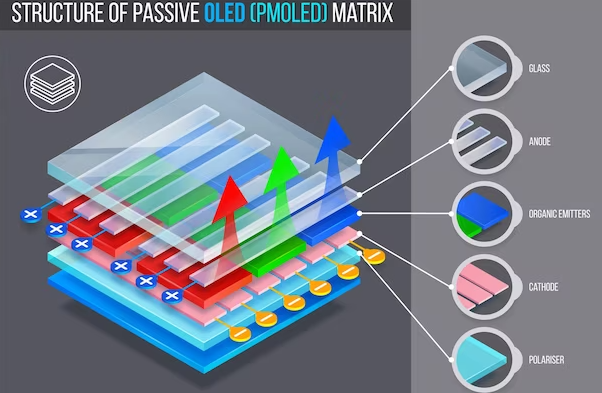According to the driving method, OLED displays technology can be divided into the active matrix (AM-OLED) and passive matrix (PM-OLED).

Active Matrix OLED (AM-OLED)
AMOLED stands for active matrix organic light emitting diode. It employs an active matrix in addressing pixels and uses a specific type of thin film technology in which organic compounds form electroluminescent material.
It is a display technology used in mobile devices, digital cameras, media players, and televisions.

Advantages of AM-OLED
- Each pixel can be driven continuously and independently.
- It can memorize the driving signal without operating under a high pulse current.
- Higher efficiency and longer lifespan.
- Suitable for large-size, high-resolution full-color OLED display products.
Disadvantages of AM-OLED
- The production process is complex and expensive.
- Immature technology development.
Passive Matrix OLED (PM-OLED)
It refers to the arrangement of the driving electrodes in the OLED display.
In PMOLED displays, there is an array of horizontal conductors and an array of vertical conductors, with the OLED material between them.
Its pixel is formed where the vertical and horizontal conductors intersect.

Advantages of PM-OLED
- High contrast displays with cool crisp icons.
- Ultra-thin design as there is no backlight.
- Low power consumption.
- Wide viewing angles.
Disadvantages of PM-OLED
- To maintain the brightness of the entire panel, it is necessary to increase the brightness of each pixel to increase the operating current, so the lifespan is shortened.
- It is not suitable for large-size panels.
Conclusion
AMOLED and PMOLED are two types of organic light-emitting diode display technologies that differ in application and characteristics.
AMOLED displays offer higher resolution and brightness, as they use more pixels and higher-brightness LEDs. They also offer better contrast and deeper blacks, as each pixel can emit light independently without the need for a backlight.
PMOLED displays, on the other hand, are more suitable for small-screen applications such as embedded devices and watches. They typically have lower resolution and brightness, as they use fewer pixels and lower-brightness LEDs. However, they are also cheaper and easier to manufacture, as they use simpler materials and processes compared to AMOLED.
Overall, both AMOLED and PMOLED have their advantages and disadvantages and are suitable for different applications. AMOLED is suitable for large-screen, high-resolution applications, while PMOLED is suitable for small-screen, low-resolution applications.

